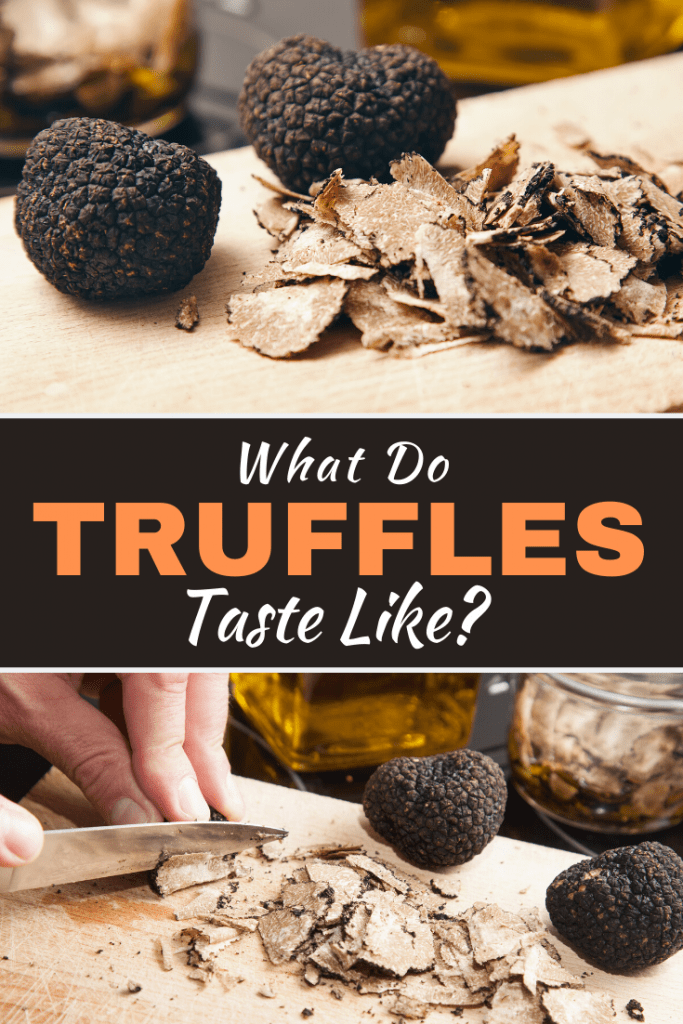Truffles – the real deal, not the chocolates. You’ve seen them in restaurant menus, you’ve heard your favorite chefs talk about them in cooking shows, but truthfully, what are they and what do they taste like?
If you’re wondering the same thing, then worry not, because we’re here to shed some light on this mysterious yet highly coveted ingredient.
Truffles are often used in Italian dishes and shaved over pasta. But they can also be purchased as an oil (much like olive oil) that transforms ordinary dishes into culinary delights.
A truffle is a rare culinary delicacy that’s in high demand for its unique flavor and aroma. But what exactly is it, anyway?

What Are Truffles?
A truffle is a subterranean fungus that belongs to the Tuber genus. They sometimes get misconstrued as a type of mushroom because they’re both spores, but these guys belong to a different division than mushrooms called Ascomycota.
People commonly find them near tree roots. That’s how they get their nutrients – by attaching themselves to large tree roots.
They are primarily found in Italy, and grow underneath the root systems of hazelnut, oak, and chestnut trees. But the truffles rely on fungivores (animals that eat fungi) to spread their spores.
All right, that did not sound appetizing at all. But we promise you, its flavor is far better than its origin! Even world-renowned chef Jean Anthelme Brillat-Savarin described this delicacy as the “diamond of the kitchen.” That has got to mean something!
What Do Truffles Taste Like?
Now that we’ve explained where they come from, time to describe what makes these truffles so beloved.
It’s a little complicated to describe exactly how truffles taste because each kind tastes a bit different based on various factors.
But to give you a hint of what the complex fungus tastes like, picture this: a combination of earthy, nutty, sweet, oaky flavors. There’s also a hint of musky, meaty flavors similar to mushrooms.
But what makes truffles so sought after is not really the taste, but their distinct musky aroma. It is so iconic that scientists link the fragrance to the reproductive hormones present in mammals – pheromones.
Why Are Truffles So Expensive?
We’re living in the 21st century, and we’ve got the most advanced technologies, but why is it that we still can’t cultivate truffles at scale? Why do they continue to be such rare crops?
Well, the reason is truffles require very specific factors to thrive – from soil to moisture to weather to types of trees. Plus, it takes years for a truffle to mature. 10 years, to be exact. Talk about high maintenance!
And there’s more: truffles are also very difficult to find. Since they attach to the roots of trees, and since roots dig deep underground, that’s where you’ll find them. This means you need professional dogs to sniff them out!
History also plays a little role in its priceyness. You see, during the ancient years, truffles were linked with the divine.
The combination of all these factors makes truffles one of the most expensive fungus you will ever find.
And for many five-star chefs and food aficionados, it’s well worth it!
Black Truffles VS. White Truffles
Apart from the color, what is the difference between black and white truffles?
White truffles, also known as Alba truffles, are one of the more common types of truffles, but they’re also more expensive than black truffles.
If it’s more common, what makes them more costly than black truffles? Well, white truffles have a mild garlicky flavor that resembles that of shallots. It is highly coveted for its strong musky aroma that can turn any regular meal into an exquisite gourmet dish.
Black truffles, on the other hand, are a specialty in France. They grow underground, usually found in the roots of oak and hazelnut trees. They are more affordable than white truffles and are more commonly sold in jars.
As for the taste, black truffles have a combination of earthy, chocolaty, and nutty flavors. They also have a subtle mushroom and woody flavor. Imagine that!
Much like a fine wine, truffles have a complex flavor profile that varies from one species (and variety) to the next.












